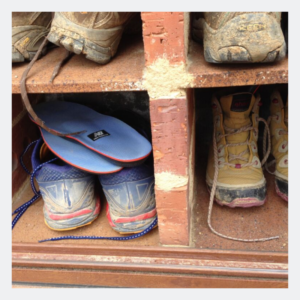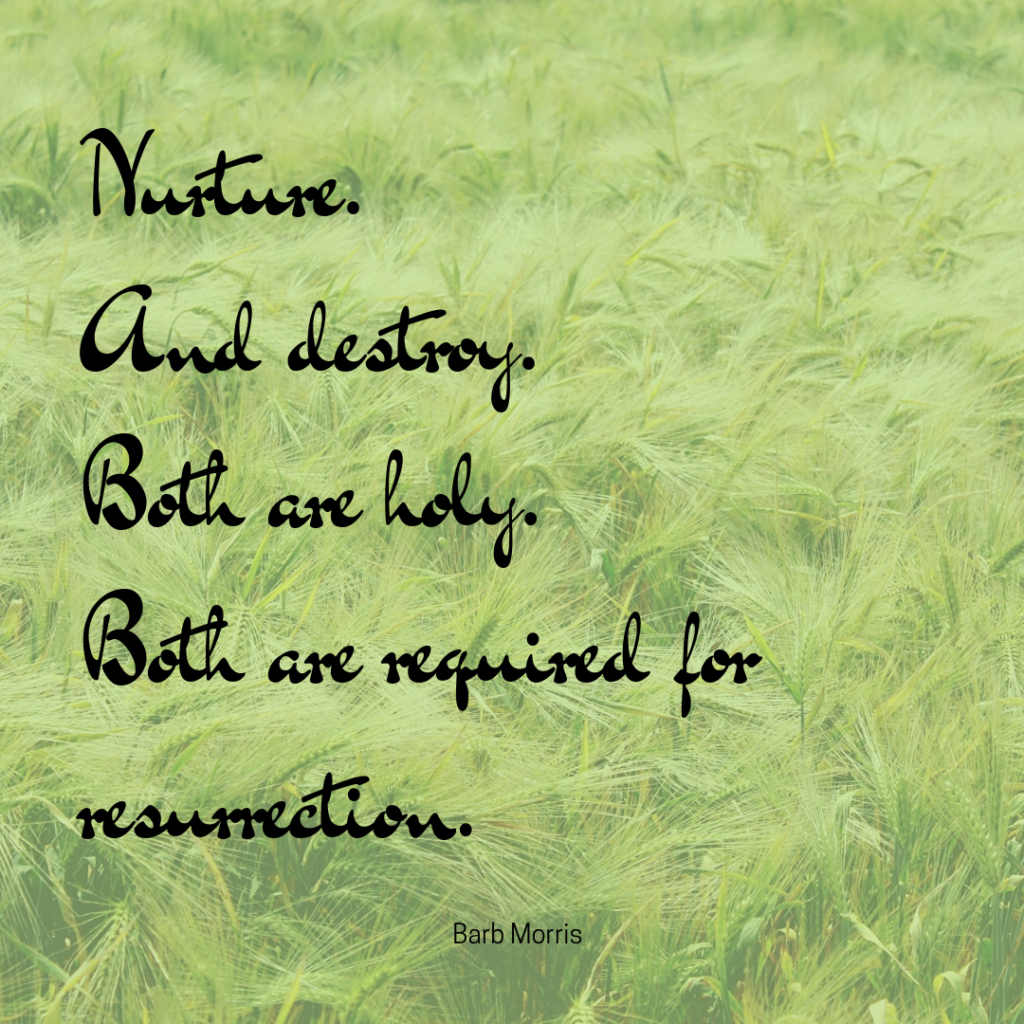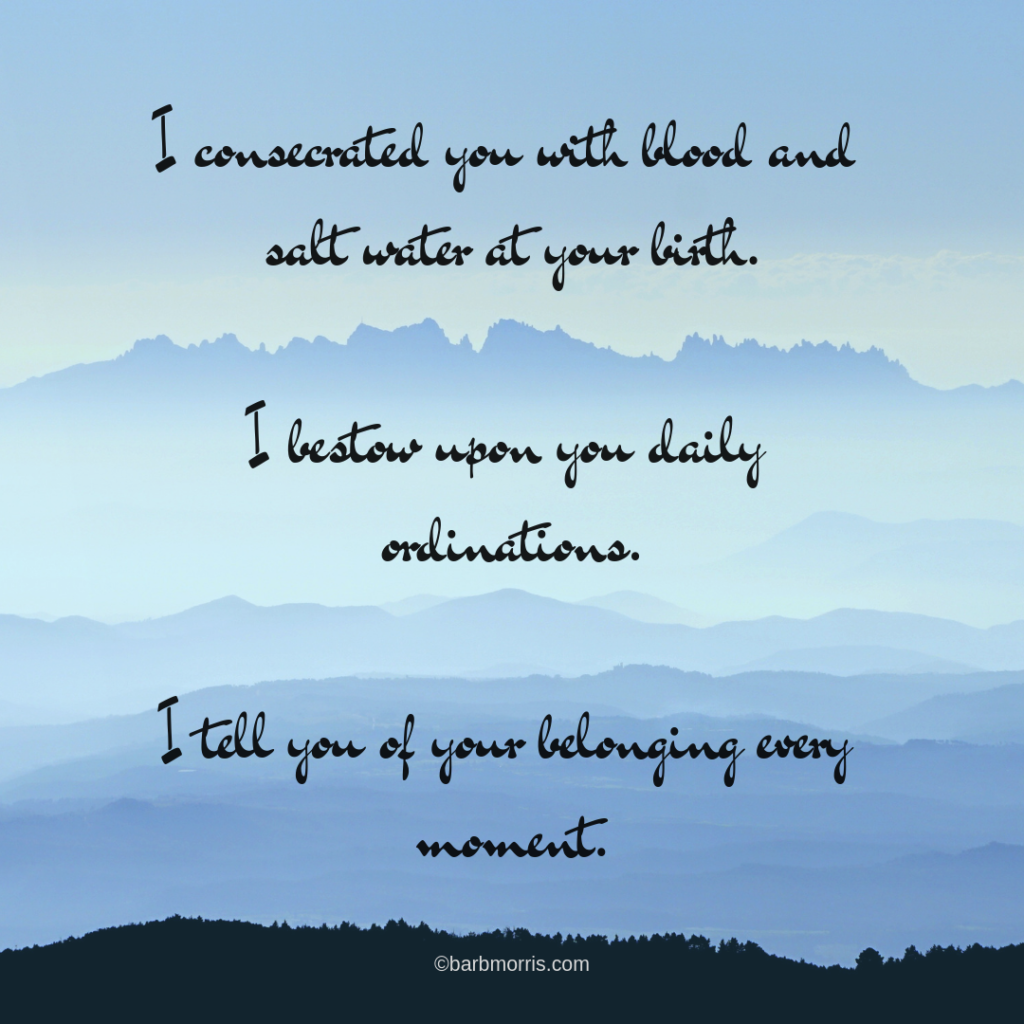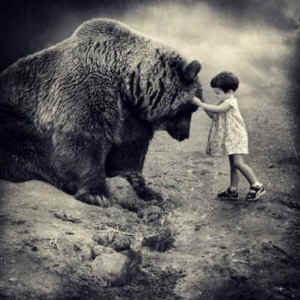
I’ve been receiving more requests for coaching rooted in spirituality after writing “A letter from God to her daughters who observe Lent.” These writers are seeking coaching based in progressive Christian faith and practice. I want to help, and so I want to be transparent about my own spiritual life.
My husband and I walked the Camino de Santiago in 2014. Experiences of God were common for me on the Camino, although it was still mostly walking. One of those experiences has shaped my spirituality — how I imagine and connect with the Divine — in profound ways.
I was alone for a few hours on the 17th day of the 35 days it would eventually take us to walk to Santiago. We were walking between Castrojeriz and Fromista, across the vast central Spanish plateau called the Meseta, on a cold, rainy day. Jed stayed behind in the village we’d just walked through to buy lunch. I continued up the next hill alone, surrounded by other pilgrims also walking up a hill in the cold Meseta rain through the sticky Meseta mud. Gradually I became aware of a presence beneath me, in the earth, sustaining me and communicating with me. This presence felt muscular— “a womb-like heart,” I wrote in my journal. The presence felt incredibly big, and it overflowed with love. I knew this presence was love. I was connected to it, and through it to the pilgrims walking around me, to the trees at the top of the hill, and to the hill itself.
I was connected to everything in the universe through this deep loving presence.
I understood that day that the only thing God requires from me is to accept this connection, maintain it, and strengthen it. To stay connected, and to flow with what comes through the connection. That’s it.
This Camino experience was deeply physical, a mosaic composed of feelings and images. There were no words. I simply and clearly knew something then that I hadn’t known ten minutes earlier. And I still know it.
Here’s the thing we often forget about religion. It’s made up. It’s constructed. Religion is a container created by humans to hold experiences of God, Other, Ultimate Reality, Oneness, whatever you want to call the Divine. In Christianity’s case, it’s an invented response to experiences of Jesus – a Jewish peasant healer killed by the Roman Empire because of his love-based, rebellious, socialist message. His followers experienced his presence after his death, and they told resurrection stories about him. A loosely organized religion began to coalesce. When Constantine converted to Christianity, the church become aligned with dominant culture and spread across the Roman Empire.
Once created, religious containers take on a life (or a death) of their own. Communities begin to protect and pass on the container at the expense of the experiences the religion was created to hold. A couple of millennia later, that container sits on our shelf, cracked and dusty but still prominently displayed and precious.
I’m a child of the Christian church, gestated in mainline Protestantism. I was born into an Episcopal family, and the Episcopal Church has been my Christian place for the most part. I’m a member of “the Episcopal branch of the Jesus Movement.” My personal experiences of Jesus, both in church and not in church, are precious to me. Yet I seem to have most of my experiences of the Divine outside, under trees, on mountains, beside rivers, swimming in lakes, sitting on rocks in the sun. I also find much wisdom and solace within Buddhism.
People who contact me to explore coaching together usually want to answer these questions: How do I reconcile this Jesus-shaped place in my heart with my adult knowledge and experience? How do I navigate this uncharted territory with integrity and faithfulness? And how can I be true to what I know about God while keeping the peace in my family?
For me personally, the question I’m living is: How do I reconcile my adult experiences and beliefs — my Camino experience, loving Jesus, and the oneness I feel with God in creation among them — with conventional church affiliation and Sunday morning worship?
I don’t know yet. This is a work in progress and probably always will be.
Here’s what I do know:
I’m not required to accept any authority but my own. I can trust my own authority and experiences of the Divine. I’m connected to the deep heart of God. My job is to stay connected. That’s all. That’s it. God will do the rest. My spiritual practice is doing whatever helps me allow, maintain, and strengthen my connection to God, and, through God, to all beings. Sometimes my practice is going to church. Sometimes it’s sitting on a rock with my feet in a river, praying. Sometimes it’s Vipassana meditation. Sometimes it’s none of the above.
My spiritual practice is doing whatever strengthens my connection to God, and, through God, to all beings. This is my call.
When I look at the Christian tradition through this lens, here’s some of what I see:
- Language that places God outside or above creation weakens that connection.
- An emphasis on sin, on our badness instead of our belovedness, weakens that connection.
- I experienced the presence that day on the Camino as most like a womb, yet beyond gender. Patriarchal words and ideas weaken that connection.
- Eucharist strengthens that connection.
- Jesus stories strengthen that connection.
It’s not heresy, and it’s not sin, to melt that cracked, dusty vessel down and forge a new one. I believe this is our responsibility and our vocation. Death and resurrection is, after all, what Jesus was all about.
I wish church on Sunday morning was right there with me. It’s not. So I’m very intentional in my church attendance. Sometimes I don’t go for weeks, and I choose mountain or river or studio church instead. And then I go back, because something in me needs this occasionally anachronistic Christian tradition to feel whole. I’m focusing on letting go of what doesn’t serve me and choosing to live in unknowing for as long as it takes. I suspect this is the work of a lifetime. This work feels uncomfortable often, especially because I’m married to the rector. I’m working to find that elusive and shifting balancing place where I’m living in integrity, being present for my husband, and feeding and being fed by others who love Jesus.
I want community to do this work within – the work of forging adult faith, engaging the sacraments and stories, and participating wholeheartedly in rituals that allow, maintain, and strengthen my connection to God’s deep heart and, through Her heart, to all beings.
I say “forge an adult faith,” not “find an adult faith,” because, for me, this process requires melting down and separating out what’s useful from what’s not. Forging faith requires acceptance and endurance of the refiner’s fire. Forging faith requires discernment of what nurtures us and our world. Forging faith requires courage to honor our experiences. Forging faith requires trusting resurrection and joining with God to make something new. Forging faith means creating a new vessel for the Holy One in our midst, and holding that vessel lightly.
This all sounds like a lot of work, doesn’t it? So why bother? Why not walk away? My rational, quantitative left brain asks this over and over.
Walking away is the answer for some of us. It’s not my answer. Since you’re reading this, walking away probably isn’t your answer, either.
My current response to my brain’s protestations is that my heart knows things my brain doesn’t. My heart remembers what it felt that day on the Camino – the bottomless peace and love flowing from that bigger, deeper, holy heart – and it won’t let me walk away from this spiritual journey. To live in integrity, for me, requires that I take faith and spirituality seriously. To be whole, for me, requires forging an adult faith, one component of which is Christianity.
If any of this resonates with you and you’d like to talk further, please contact me to schedule a free no-obligation consultation. I’d love to connect!





